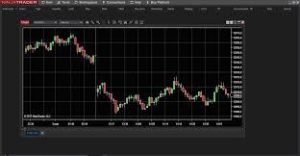
The foreign exchange (Forex) market is unparalleled in its liquidity, earning its reputation as the most liquid financial market worldwide. With an average daily trading volume exceeding $7.5 trillion as of 2023, Forex outpaces other markets, including equities and futures, by an impressive margin. But what exactly makes Forex so liquid? Let’s break down the factors contributing to its unmatched liquidity.
24/5 Accessibility for Traders Globally
One of the key drivers of Forex liquidity is its operating schedule. Unlike stock markets, which traditionally operate during set hours, the Forex market is accessible 24 hours a day, five days a week. From the moment the Sydney session opens to the close of the New York session, the market operates continuously across different time zones. This constant activity ensures that there is always movement in the market, attracting a steady stream of participants.
This accessibility is particularly beneficial for traders and institutions that require flexibility. It allows them to execute trades at nearly any moment, ensuring faster transactions and minimizing the chances of delayed order fulfillment.
Participation from a Wide Range of Players
Another contributing factor to Forex liquidity is the sheer diversity of participants. The market attracts everyone from global banks, hedge funds, and multinational corporations to individual retail traders. Central banks frequently intervene in Forex markets to stabilize or adjust national currencies, while corporations engage in currency transactions to facilitate international trade and hedging against foreign-exchange risk.
This diverse participation creates a dynamic environment with constant buying and selling of currencies. The presence of institutional players like Deutsche Bank, JPMorgan, and Citi adds significant volume to the market, while retail traders provide additional layers of activity, ensuring that supply and demand are met efficiently.
The Role of Major Currency Pairs
The Forex market is built around major currency pairs, like EUR/USD, USD/JPY, and GBP/USD, which account for the majority of trading activity. These currency pairs inherently contribute to market liquidity due to their high demand in trade and investment across the globe.
For example, the US dollar is considered the world’s reserve currency, used in nearly all international trade and financial transactions. Similarly, the euro and Japanese yen are vital currencies used for trade, investment, and central bank reserves. High demand for these currencies ensures an ample flow of funds in the market at any given time.
Advanced Technology and Instant Transactions
Forex’s liquidity is further enhanced by the seamless integration of advanced technology. Electronic trading platforms and algorithms enable fast transactions, instant order execution, and real-time market monitoring. Whether you’re a retail trader using a platform like MetaTrader or an institutional player employing proprietary trading algorithms, technology ensures trades happen almost instantly.
This speed and efficiency attract traders who value liquidity since they can enter or exit positions swiftly, often without significant price slippage.
Flexible Leverage and Scalability
Forex markets offer flexible leverage, allowing traders to amplify their exposure to the market. While leverage itself doesn’t directly impact liquidity, it attracts a large volume of participants, both large and small. This influx of traders further boosts market activity, reinforcing its liquid nature.
Additionally, the market’s scalability means that both small trades by individuals and large orders from institutions can be executed without major disruptions or delays. This makes Forex an appealing market for diverse trading strategies and investment goals.
A Truly Global Marketplace
Finally, Forex’s liquidity stems from its global appeal. Nearly every country interacts with Forex markets through trade, tourism, investments, or monetary policies. This decentralized nature, combined with the continuous movement of funds, ensures that the market functions with a high degree of stability and activity.
Currencies remain a universal need, and this perpetual demand makes Forex liquidity unmatched by other financial markets.
Final Thoughts
Forex’s unparalleled liquidity is no coincidence. Its 24/5 schedule, diverse participant base, major currency demand, advanced technology, and global reach all contribute to its position as the most liquid market in the world. By capitalizing on these factors, Forex provides opportunities for traders and institutions to execute transactions quickly and effectively, affirming its status as the heartbeat of the global financial system.
